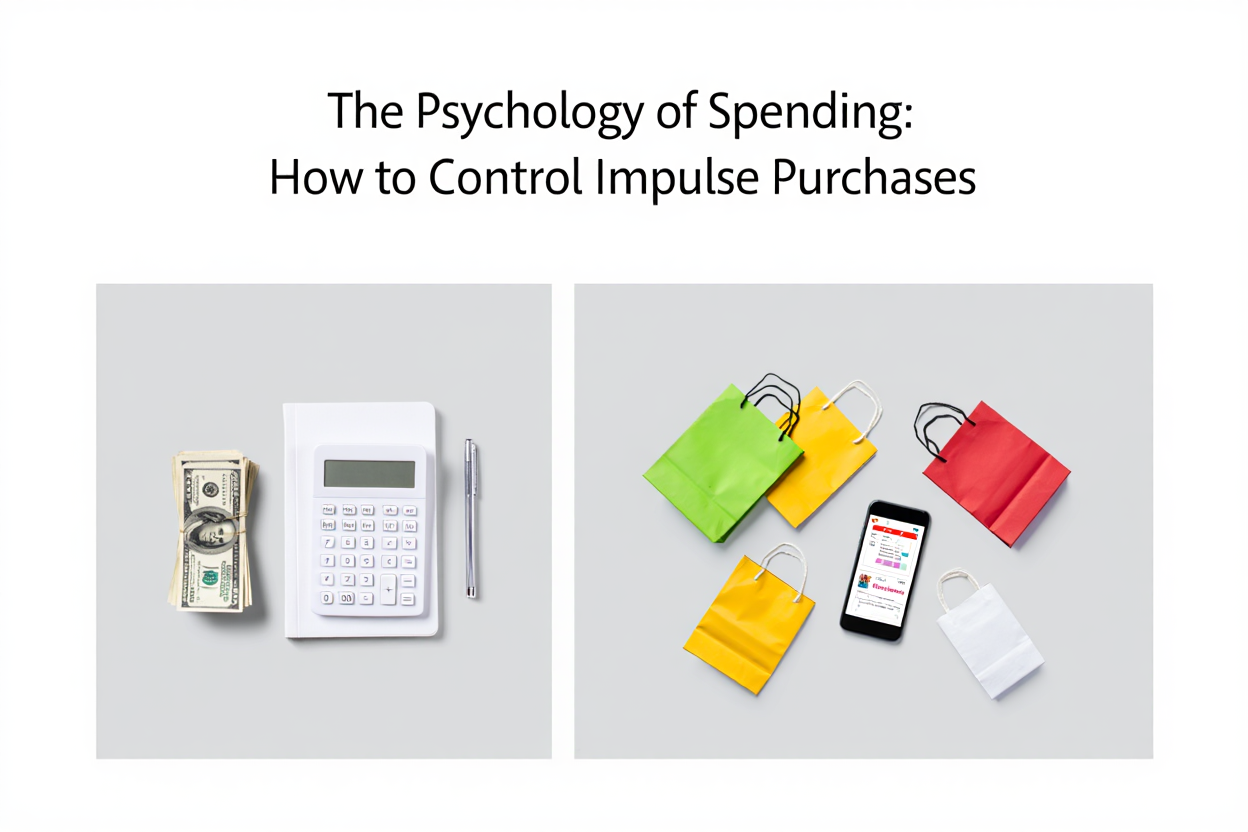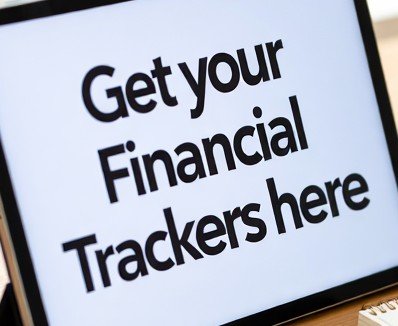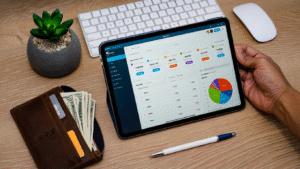
In today’s fast-paced, consumer-driven world, impulse buying is more common than ever. With one-click checkouts, targeted ads, and limited-time offers constantly vying for our attention, it’s no wonder many people find themselves struggling to stick to a budget. But why do we make impulse purchases in the first place? And more importantly, how can we stop?
This in-depth guide explores the psychology behind impulse buying and provides practical strategies to help you take control of your spending habits for good.
What Is Impulse Buying?
Impulse buying refers to unplanned purchases driven by emotions rather than logic or need. These purchases often happen spontaneously and are influenced by external stimuli like sales promotions, product placement, or emotional triggers such as stress or boredom.
Examples include:
- Adding extra items to your cart while grocery shopping
- Buying clothes you don’t need during an online sale
- Purchasing gadgets after seeing influencer reviews
The Psychology Behind Impulse Buying
To control impulse spending, it’s crucial to understand the psychological triggers behind it. Here are the most common factors:
1. Instant Gratification
Humans are wired to seek pleasure and avoid pain. Impulse buys provide an instant dopamine rush, making us feel good temporarily. This is especially true when we’re stressed, anxious, or bored.
2. Emotional Spending
Shopping often serves as a coping mechanism for difficult emotions. Whether it’s retail therapy after a breakup or treating yourself after a hard day, emotional spending is a common trigger.
3. Fear of Missing Out (FOMO)
Sales, discounts, and “limited time only” offers tap into our fear of missing out. The urgency pushes us to act quickly, often before we’ve had time to evaluate the purchase.
4. Social Influence
We are influenced by others—friends, family, celebrities, and social media personalities. Seeing others enjoy a product can make us want it too, even if we don’t need it.
5. Neuromarketing Techniques
Marketers use psychological tricks to trigger purchases:
- Colors like red to signal urgency
- Scarcity messages (“Only 3 left!”)
- Countdown timers
- Personalization
The Hidden Costs of Impulse Buying
Impulse spending may seem harmless, but it can have long-term consequences:
- Budget Breakdown: Frequent small purchases can derail your budget over time.
- Debt Accumulation: Impulse spending on credit can lead to high-interest debt.
- Emotional Guilt: Many people experience buyer’s remorse or shame after impulsive purchases.
- Clutter and Waste: Buying things you don’t need leads to clutter and waste.
How to Recognize Impulse Triggers
Awareness is the first step in changing behavior. Start by identifying your personal impulse buying triggers:
- Emotions: Do you shop when you’re sad, angry, or stressed?
- Environment: Are certain stores or websites more tempting?
- Time of Day: Are you more likely to shop late at night or when you’re tired?
- Social Situations: Do you spend more around friends or on social media?
Proven Strategies to Control Impulse Spending
Controlling impulse spending isn’t about deprivation—it’s about being intentional. Use these strategies to take control:
1. Follow the 24-Hour Rule
Wait at least 24 hours before making any non-essential purchase. This cooling-off period gives you time to evaluate if you really need or want the item.
2. Create a Realistic Budget
Set a monthly budget that includes a small amount for discretionary spending. When you allow for fun purchases, you’re less likely to feel restricted.
3. Use Cash or Prepaid Cards
Paying with cash creates a psychological “pain of paying” that credit cards don’t. Prepaid cards or debit cards with set limits can also help curb overspending.
4. Unsubscribe and Unfollow
Reduce exposure to temptation by unsubscribing from promotional emails and unfollowing influencers who encourage consumption.
5. Shop with a List
Whether online or in-store, always shop with a list. Stick to it and avoid browsing other categories.
6. Avoid Shopping When Emotional
Don’t shop when you’re feeling sad, stressed, or bored. Instead, find healthier coping mechanisms like walking, journaling, or calling a friend.
7. Track Your Spending
Use budgeting apps or spreadsheets to track every purchase. Awareness of your habits is a powerful deterrent.
8. Set Financial Goals
Visualize what you’re saving for—a vacation, emergency fund, or debt freedom. Keeping your goals front of mind helps resist impulsive urges.
9. Practice Mindful Spending
Before buying, ask yourself:
- Do I need this?
- Can I afford it?
- Will this matter in a week?
- Am I buying this to fill an emotional need?
10. Reward Yourself (the Smart Way)
Reward yourself with non-material treats like time off, a favorite activity, or quality time with loved ones. This helps reinforce good habits without spending.
Tools and Resources to Help You Stay on Track
Technology can be a powerful ally in managing your money. Here are some tools to support your efforts:
- Budgeting Apps: YNAB (You Need A Budget), Mint, PocketGuard
- Browser Extensions: Honey, Rakuten, or Capital One Shopping can help you avoid paying full price
- Spending Trackers: Spreadsheets, apps like Goodbudget or EveryDollar
- Blocking Apps: Freedom, Cold Turkey, or StayFocusd can block shopping sites
Building Better Financial Habits Over Time
Impulse control takes practice. Like any habit, it strengthens with consistency. Here are some long-term approaches:
- Automate Savings: Set up automatic transfers to your savings account on payday.
- Practice Gratitude: Regularly reflect on what you already have to reduce desire for more.
- Accountability Partner: Share your goals with a friend who can help keep you accountable.
- Financial Education: Read personal finance books or listen to podcasts for ongoing inspiration.
Final Thoughts: Mastering the Mindset
Controlling impulse spending isn’t just about budgeting—it’s about mindset. It requires self-awareness, discipline, and a commitment to long-term financial wellness. By understanding the psychological triggers and implementing intentional strategies, you can transform your relationship with money.
Remember: You don’t have to be perfect. Start small, stay consistent, and celebrate progress along the way.
Your Turn: What are your biggest impulse spending triggers? Have you tried any of these strategies? Let us know in the comments!
Want to go deeper? 👉 Shop for Financial Trackers Now and take the first step toward financial mindfulness today.
#ImpulseSpending #FinancialWellness #BudgetTips #MindfulMoney #MoneyPsychology #SmartSpending


